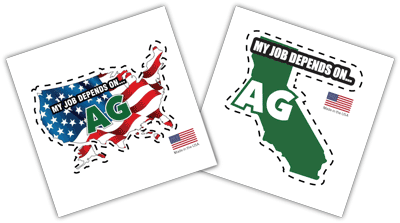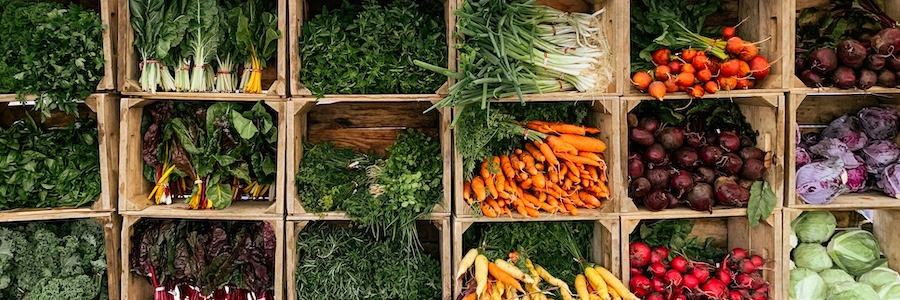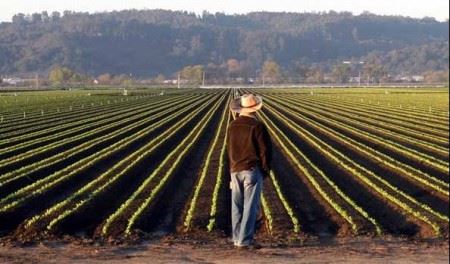In an era marked by economic uncertainty and global supply chain disruptions, the food and agriculture sector stands as the “backbone of the U.S. economy,” according to a major new report.
The 2025 Feeding the Economy study, by 36 U.S. food and agriculture trade organizations, offers a comprehensive analysis of this sector’s profound impact, revealing its role as a dynamic engine driving employment, exports and economic output.
The annual report (2025 is the ninth year) is a comprehensive research study conducted for the 36 national food and agricultural trade organizations by economic research and consulting firm John Dunham & Associates. It’s a “farm-to-fork” analysis that gauges the direct and indirect economic contributions to U.S. economic output, wages and taxes by any business involved in food agriculture, food manufacturing, food wholesaling or food retailing.
Some of the 36 industry trade organizations – which together represent every aspect of the U.S. food and agriculture supply chain – include: the American Farm Bureau Federation, U.S. Dairy Export Council, National Corn Growers Association, Meat Institute, National Association of State Departments of Agriculture, U.S. Grains Council, Food Marketing Institute and National Grocers Association.
A Trillion Dollar Powerhouse
According to the study, the U.S. food and agriculture sector contributes over $9.5 trillion to the national economy, accounting for 18.7% of the total economic output. While this marks a slight decrease from the previous year’s $9.6 trillion (approximately 20% of total economic activity), the food and agriculture sector’s significance remains unparalleled. This modest dip reflects broader economic trends rather than a decline in the sector’s vitality.
Employment and Wages: A Growing Workforce
The food and agriculture industry directly supports over 24 million jobs, representing a whopping 15% of U.S. employment, the report says. Since 2020, direct employment in food and agriculture has grown by more than 1 million jobs, showcasing the industry’s resilience and capacity to generate employment opportunities even amidst global challenges.
In terms of compensation, the food and agriculture sector contributes $2.8 trillion in wages, underscoring its role in sustaining livelihoods across the nation. However, the report notes that while wages have grown year-over-year, they have not kept pace with inflation, reflecting nationwide stressors and the high cost of labor for employers.
The food and agriculture industry also contributes nearly 47.2 million jobs to the national economy and business taxes of $1.26 trillion, the report says.
Exports: Feeding the World
According to the study, the U.S. exports nearly $183 billion annually in food and agriculture products, reinforcing the sector’s critical role in global trade. These exports not only bolster the domestic economy but also affirm the U.S.’s position as a leading provider of food and agricultural products worldwide.
From Farm to Fork: The Supply Chain Spectrum
The journey of agricultural products begins on nearly two million farms and ranches spread across the country, covering two out of every five American acres. Primary producers form the bedrock of the supply chain, which extends through approximately 200,000 food manufacturing, processing and storage facilities. Here, millions of food scientists, production workers, logistics experts, truck drivers and engineers ensure the integrity and efficiency of the food supply.
The food and agriculture distribution network further encompasses over one million restaurant and foodservice locations and roughly 200,000 retail food stores, bringing products to consumers nationwide. This extensive supply chain not only ensures food availability but also supports local economies, particularly in rural America, as workers spend their income within their communities.
The U.S. supply chain, which has over the last few years been significantly pressured and strained due to the Covid-19 pandemic, inflation and other causes, continues to show resilience in the face of adversity.

Local and Regional Impacts
The 2025 Feeding the Economy study also examines food and agriculture on regional, state and local levels.
The economic impact of the food and agriculture sector varies across regions. For example, urban counties, such as Los Angeles County in California and Cook County in Illinois, lead in total food industry output due to high population densities and food sales. Conversely, rural counties like Lawrence County, Illinois and Kern County, California are top contributors in direct agricultural output, highlighting the sector’s significance in both urban and rural economies.
California’s Agricultural Landscape: A Microcosm of National Trends
In terms of states, California is the nation’s agricultural leader, and it exemplifies the themes highlighted in the national Feeding the Economy 2025 study.
The state’s farms and ranches generate approximately $60 billion in annual cash receipts. Key commodities include: pistachios (approximately $2.98 billion annually), strawberries (approximately $2.97 billion annually), tomatoes (approximately $2.01 billion annually), carrots (approximately $1.67 billion annually), and broilers (approximately $1.24 billion annually). California is the most diverse farm state in the nation, producing over 400 different crops and commodities.
The state’s agricultural exports totaled approximately $24.3 billion in 2024. Top export commodities were almonds, dairy and dairy products, pistachios, wine and walnuts.
California also leads the nation in organic product sales, which rose by 18.2% from $9.4 billion in 2018 to about $11.1 billion in 2023. An estimated 1.83 million acres are currently planted in organic crops in California.
Despite its robust contributions, California’s agriculture sector faces significant challenges. For example, trade tensions have led to retaliatory tariffs from key markets like China. These tariffs threaten approximately $24 billion in annual agricultural exports, with almond growers – who export about 75% of their yield – being especially vulnerable, along with pistachio growers. Pistachio nuts from California have been in fast-increasing demand globally over the last few years. The California wine and dairy industries are also vulnerable to retaliatory tariffs because they generate a significant amount of their respective revenue from exports.
Labor shortages present another critical issue. California’s agricultural industry heavily relies on immigrant labor, with a significant portion of farmworkers being undocumented. Policies aimed at mass deportations could disrupt the supply chain, leading to increased prices and potential shortages of essential commodities.
Environmental factors, including extreme weather and water restrictions, further compound these challenges. Farmers must navigate a complex landscape of policy shifts, funding freezes and labor crackdowns, all while striving to maintain productivity and sustainability.
Challenges and opportunities ahead
Despite its robust performance, the U.S. food and agriculture sector faces several challenges. For example, the 2025 study highlights a year-over-year decline in agricultural manufacturing jobs, with a reduction of nearly 30,000 positions since 2020. This trend points to the need for strategic investments in workforce development and technological innovation to sustain and grow the sector’s employment base.
Moreover, the discrepancy between wage growth and inflation underscores the importance of addressing economic stressors that affect both employers and employees. Ensuring that wage increases align with the cost of living is vital for maintaining the food and agriculture sector’s attractiveness and sustainability.
Policy Considerations
The comprehensive study provides valuable insights for policymakers. It emphasizes the need for policies that support wage growth, address labor shortages and promote sustainable practices within the sector. Furthermore, the report highlights the importance of maintaining robust trade relationships to support agricultural exports, which are vital to the industry’s continued growth and contribution to the national economy.
America Runs on Food and Agriculture
The 2025 Feeding the Economy study illuminates the indispensable role of the U.S. food and agriculture sector in driving economic growth, employment and global trade. As the nation navigates complex economic landscapes, the sector’s resilience and adaptability offer a model for sustainable development. Continued investment in infrastructure, workforce training and innovation will be essential to harness the full potential of this vital industry, ensuring that it continues to feed not only the nation but also the world.







